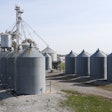As I write, much of the UK is blanketed in unseasonal snow. While the view from my window may be appealing, the change in the seasons is not without its difficulties.
The January/February issue of Feed International contains our annual World Feed Panorama. Looking back at the last edition of the Panorama, there was a positive feel to the market, but this year, we note that the cost of inputs has slowed this expansion.
Change and continuity
No producers in any sector like high input prices or market volatility but, like the changeable weather, unfavourable prices and volatility look set to continue in 2011.
2010 saw the worst drought in Russia for some 50 years, and rain downgrading food grains in Australia, after the later had suffered a number of years of drought.
While Russia’s drought has effectively cut of a source of cheap grain to the rest of the world – the Russian harvest fell to 60.3 million tons in 2010, down from 97.1 million in 2009, reducing world supplies by some 5% – Australia’s downgrade may boost feed supplies a little.
But in an era when economic growth and consumer demand are continuing ever upwards in some parts of world, while in others, governments are requesting financial bailouts and imposing austerity measures, it is difficult to predict exactly what the year ahead will hold, and for how long uncertainties will continue.
Supplies of food and feed grains have not run out, but demand patterns are shifting and supplies are no longer cheap.
Russia
Food and feed gain markets do not function independently. As 2010 drew to a close, Russian Prime Minister Vladimir Putin called on a number of countries to reserve grain to ship to Russia in case the nation faced shortages.
There have been reports that Russia may buy up to 3 million tons of feed grain by April 2011 and may need to import as much as 5 million tons in the 12 months to June 2011, when the country’s ban on grain exports is due to come to an end.
The country’s National Grain Producers Union has suggested that food grains from the south of the country, however, should be exported, and feed grains imported.
But it is not simply the supply side that is influencing the market or traditional demands, non-traditional demands are also having an increasing impact. The US may have produced its third largest corn crop on record, but the increasing use of grains for fuel, is also contributing to demand pressure.
Fortunately, a number of market watchers have commented that they do not expect prices to continue dramatically upwards, but they do, however, suggest that the market will remain volatile, and it will be some time until stocks recover. Reading through this year’s Feed Panorama, you will see that we believe that the market has expanded slightly, but that growth has been patchy, not only between countries but also between sectors. A similar picture can probably be expected for the year ahead.
















